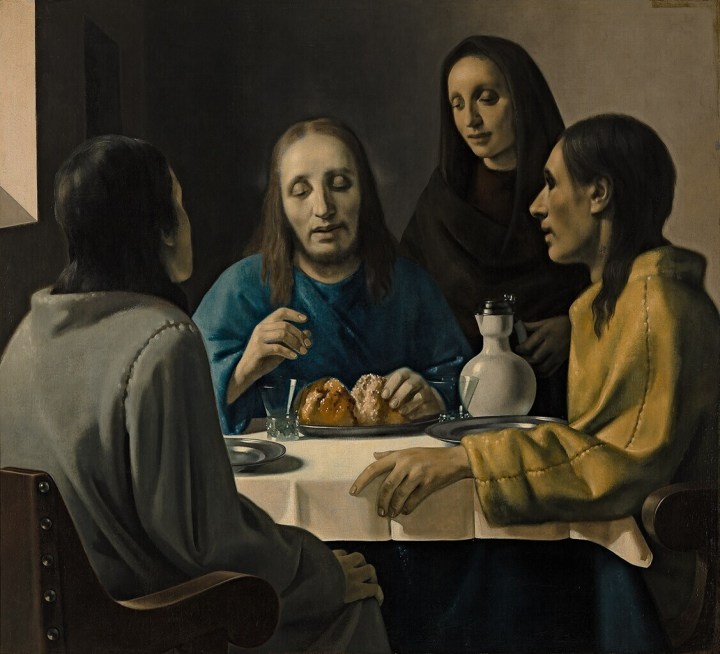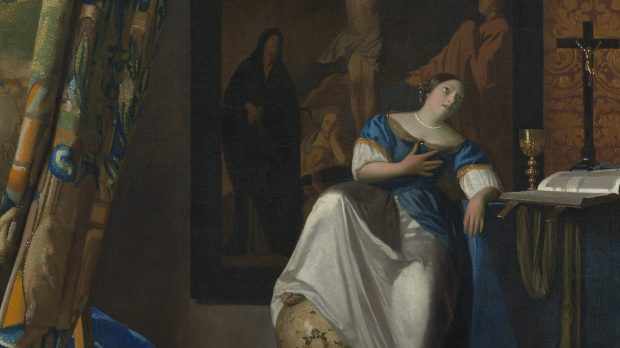Much has been written on the perils of being a Catholic during England’s long years of religious oppression. The heroes of this time are well known, and many became saints. Hardly any were painters. For two centuries after Henry VIII’s split from Rome, artists of any faith were so rare in England they had to be imported.
The situation was very different in the nearby Dutch Republic, which had an abundance of artists, many of them Catholic. The most famous is Johannes Vermeer. He surely didn’t convert from the Dutch Reformed Church to Catholicism for the career opportunities. He had no big international ambitions and probably never left his hometown of Delft.
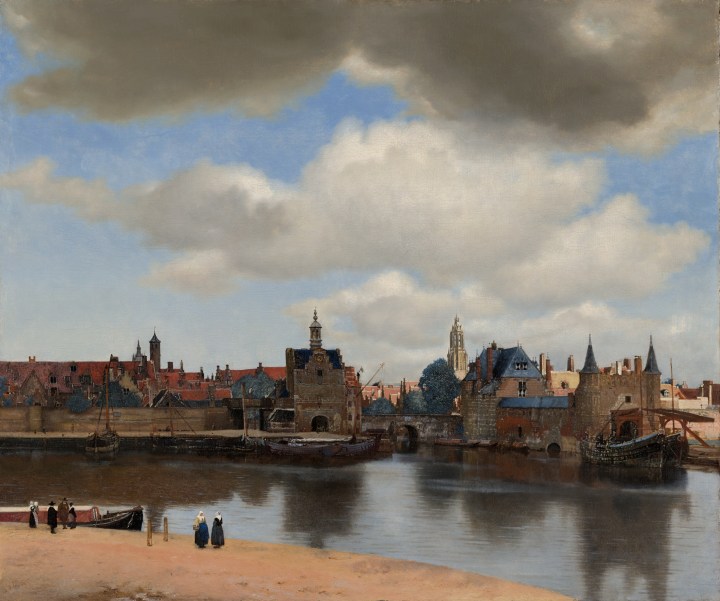
Vermeer became a Catholic for love. His wife was from the old faith at a time that was still tough for those who weren’t Calvinists in Holland. The Mass was held as unobtrusively as possible. Some of these schuilkerk (hidden churches) still exist today although you wouldn’t know them from the outside. Despite looking like unremarkable houses they are sometimes sumptuously decorate on the inside. By the 17th century, attending Mass was no longer a serious crime, but Catholicism was still a belief to be quiet about. Nothing must be done to offend Protestant neighbors – and no sleds were allowed to clutter the streets outside their theoretically non-existent churches.
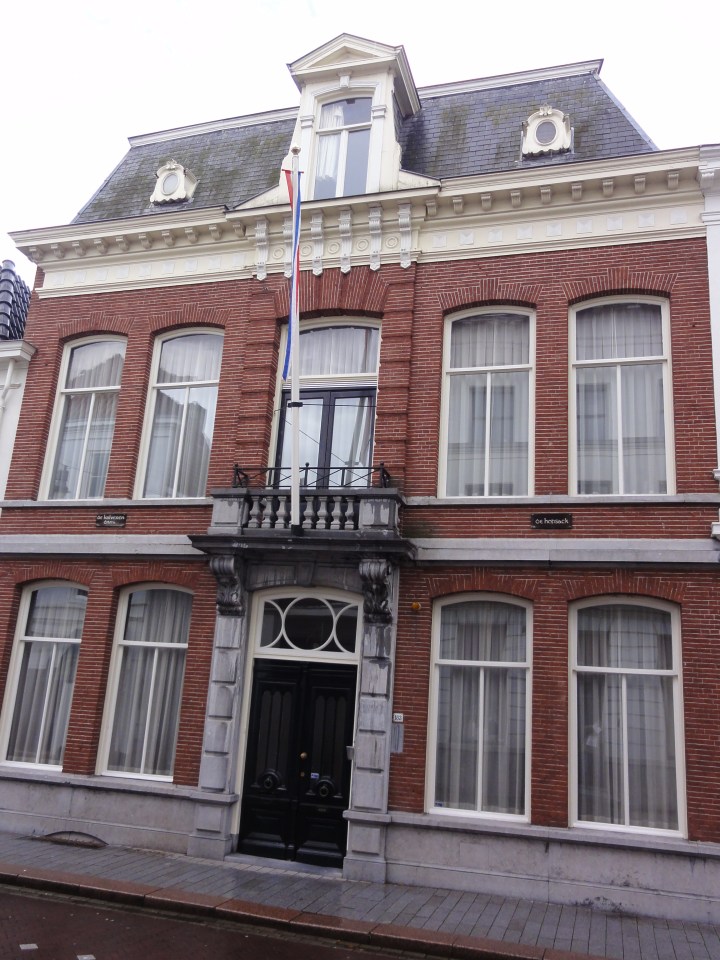
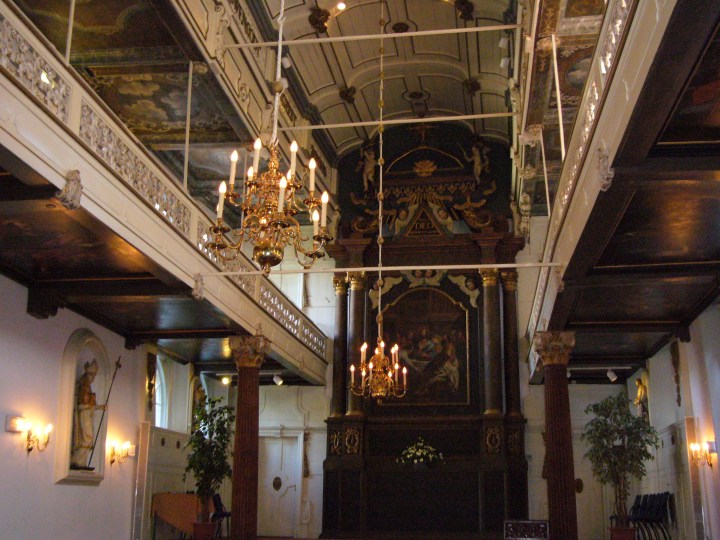
Vermeer didn’t speak or write about his faith and he almost never painted it. This an era when public sightings of crucifixes and rosaries were still forbidden. His “Allegory of Faith” broke all the rules.
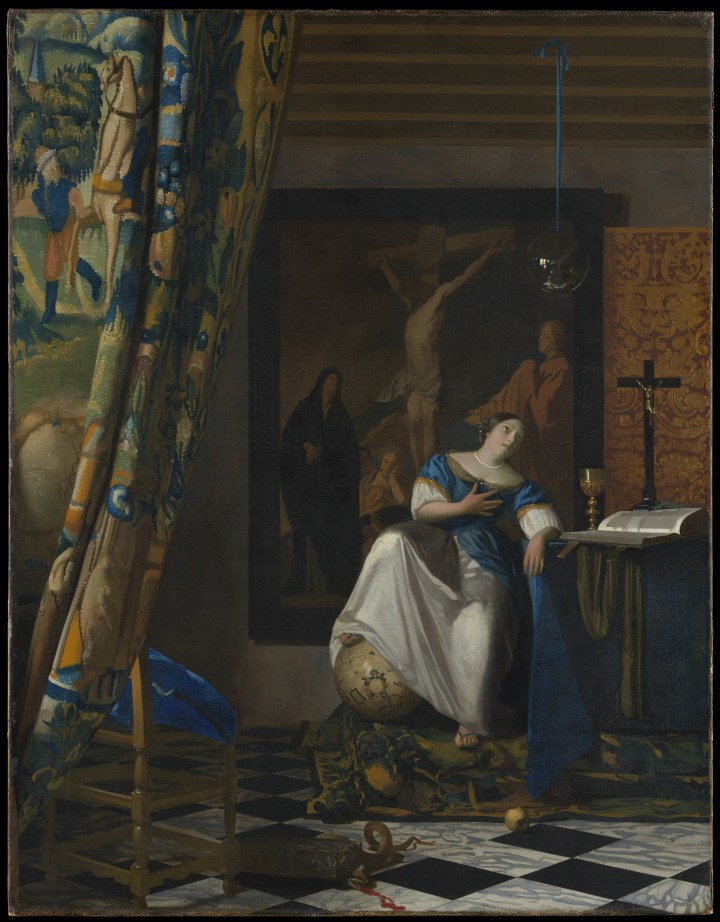
Most obvious is the female subject gazing heavenwards but surely taking in the large tabletop crucifix next to her. There’s no attempt to hide this symbol, unlike Hans Holbein the Younger’s famous portrait of two ambassadors in London’s National Gallery. Holbein was a Catholic who fled Switzerland to escape from Calvinist iconoclasm. He reached England just in time for Henry VIII’s Reformation. While there he seems to have succumbed to the blandishments of Thomas Cromwell, depicted with such charm by Hilary Mantel in her books. On the surface he became an auxiliary in bringing down the Papists. His painting “The Ambassadors” shows some misgivings. There is a crucifix almost hidden behind a curtain and, most notorious of all, a memento mori skull that is only visible if you stand at the correct and rather uncomfortable angle.
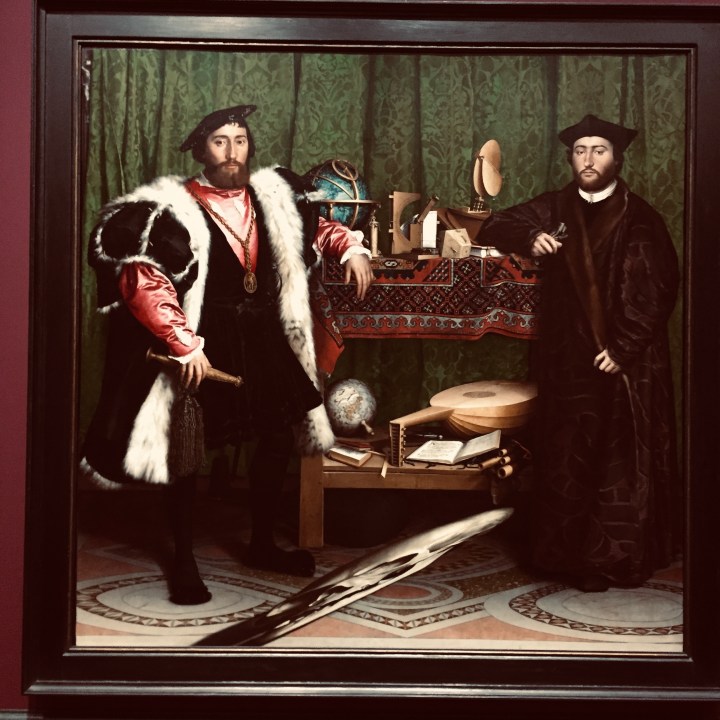
Vermeer was more direct in his statement. Just in case anyone missed the crucifix, the backdrop is a painting of Christ’s crucifixion that hung in the artist’s home.
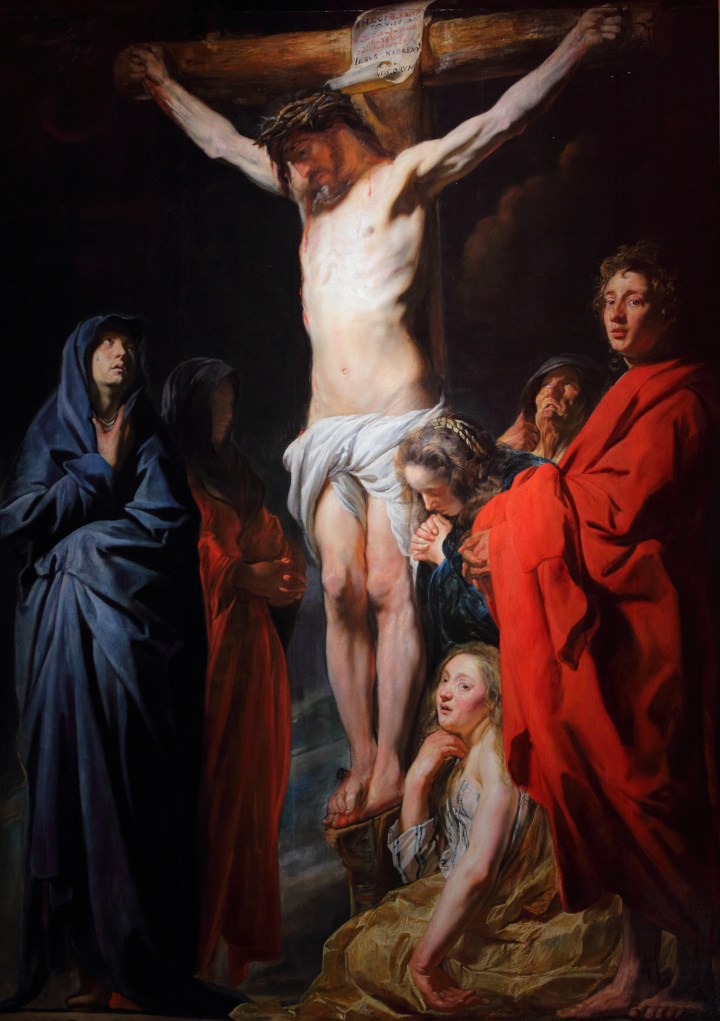
The elaborate gilt chalice that glistens on the table is of a type that was banned in most Protestant countries. These were among the most dangerous sacramental items to own, looking quite different from the simpler, “reformed” model.
The female subject, who is thought be an allegory for the Catholic faith, is dressed luxuriously. The detail that is rarely mentioned is how close the blue-and-white color scheme comes to representations of the Virgin Mary. Vermeer must have yearned for the heights of visual brilliance that the Dutch Reformed Church had banished from the Low Countries. The gold trimming of her dress even matches the chalice.
Most of his works go easy on the jewelry. Earrings were his preferred accessories, sometimes of unreasonably prodigious size as in ‘The Girl with a Pearl Earring.” The woman in this painting has a fabulous string of pearls instead. Unlike the earrings, these necklaces were considered a mark of purity. Much less pure is the half-eaten apple lying on the floor as the serpent spews blood on the veined marble.
This painting is one of the few Vermeer works not to have a table adorned with a rug from Turkey. Maybe he thought to have an Islamic weaving would not be seemly on his improvised home altar.
There is a lot of supposition about Vermeer. Few facts are known about a man who went from some renown to total obscurity before becoming one of the world’s most respected artists in the 20th century. His name at least tells us something about him. The approved Dutch Protestant form of “John” was “Jan.” By using the more elaborate Latin word, “Johannes,” he was making a statement.
He made a similar statement with the names of those of his 15 children who lived long enough to be baptized. Most revealing of all is Ignatius Vermeer, no doubt a reference to the hidden Jesuit church next door to the Vermeer home. His eldest son, also Johannes, later became a priest.
Little else is known about this elusive artist. Vermeer’s attachment to his adopted religion isn’t obvious in any other paintings. The only other work that might be by him and shows a crucifix is of St. Praxedis gazing at the Corpus Christi. As “Allegory of Faith” was painted near the end of his short life, perhaps he knew that he didn’t have much time left to express his faith. His death appears to have been brought on by extreme financial distress.

Intriguingly, the man who made by far the most money from Vermeer’s work was a forger. Han Van Meegeren was also Dutch. He was raised a Catholic but later changed his name from the Latin Henricus. After the Second World War the Dutch government prosecuted him for selling national heritage to the Nazi occupiers.
At this point he confessed to faking the numerous Vermeer works that he had sold to collectors. He had to prove the lesser offense of forgery by painting a “Vermeer” in front of the courtroom. The giveaway for his customers, who included the Nazi leader Herman Goering, should have been the number of overtly religious subjects that Van Meegeren chose. The real Vermeer hardly ever did. “Allegory of Faith”’ is a unique statement in its way.
